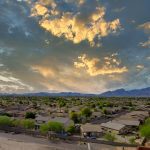No time to read articles? A summary of last week’s news stories is now available on video and embedded below:
WESTERN WATER WEEKLY VIDEO HIGHLIGHTS: KEY UPDATES ACROSS THE COLORADO RIVER BASIN
California’s Shasta Dam Cam: Bringing History to Life
Celebrating its 80th anniversary, Shasta Dam in California has launched a new livestream webcam called the Shasta Dam Cam. This camera offers a real-time view of the dam, Shasta Reservoir, and the breathtaking Mount Shasta. Located at the Shasta Dam Visitor Center, this initiative is part of a broader effort to connect the public with California’s essential water infrastructure.
Shasta Dam serves as a cornerstone for water management in the state, storing over 4,500,000 acre-feet of water while also providing flood control, hydroelectric power, and water for agricultural and urban use. Visitors can enhance their experience with free guided tours offered Friday through Tuesday, which include walking across the dam and an elevator ride 400 feet down to a spillway viewing area. Don’t miss this opportunity to witness history in action! 🌟
Arizona’s Bold Step: Ag-to-Urban Water Transfers
Arizona is tackling its housing and water challenges head-on with the passage of Senate Bill 1611. Signed by Governor Katie Hobbs, this law allows developers to purchase water rights from unused farmland, transferring water to support new housing developments. However, there’s a catch: the new homes must use less water than the farms previously did.
While supporters praise the potential to build up to a million homes while conserving water, critics argue the law fails to address rural water issues and leaves unregulated areas vulnerable. The long-term success of this legislation will depend on its ability to balance urban growth with groundwater conservation. 📌
Nevada’s Water Rights Showdown: Rancher vs. Lithium Mining
In Nevada, a heated legal battle has emerged between rancher Edward Bartel and Lithium Nevada, a mining company. The dispute began when the company pumped water from a well despite losing its permits in court. The state has since issued a cease-and-desist order.
At the heart of the conflict is whether lithium mining at Thacker Pass will infringe on Bartel’s senior water rights and harm local springs. Environmental watchdogs see this case as a red flag for rushed permitting decisions, while Lithium Nevada remains committed to its plans, targeting full production by 2028. Stay tuned as this case unfolds. ⚖️
Fire Restrictions Across the Southwest
With wildfire season in full swing, the Bureau of Reclamation has implemented fire restrictions across Arizona, Southern Nevada, and Southern California. These rules ban campfires, fireworks, welding torches, and even outdoor smoking in public lands managed by the Bureau. Only gas or liquid fuel stoves are permitted in designated areas.
The goal is clear: prevent human-caused fires during extreme heat and dryness. These restrictions align with existing policies from the Bureau of Land Management as the West braces for a challenging fire season. 🔥
Groundbreaking Research on Groundwater Pollution
A new study published in Water Resources Research introduces a revolutionary way to map groundwater pollution in arid regions. By adapting a method traditionally used in ecology, researchers have created predictive maps for harmful chemicals like sulfate and chloride in shallow groundwater. 🌍
This innovative model considers topography, land use, climate, and soil properties, making it a valuable tool for water managers in desert regions. Proven effective in Northwestern China, it holds promise for addressing groundwater challenges in the American Southwest.
Utah’s Environmental Debate: Lawsuit Against a Moab Development
Two environmental groups in Moab, Utah, have filed a lawsuit to halt a large resort and housing project near Cane Creek. They allege that developers are illegally using old water rights and exploiting legal loopholes to fast-track approvals.
The planned 586-unit development raises concerns about wildlife habitats, floodplain risks, and cultural sites. This legal battle highlights broader debates over growth, land use, and water management near the Colorado River. 🌿
Reservoir Conditions and Drought Updates
Reservoir levels across the Colorado River Basin paint a mixed picture. Upper basin states like Colorado and Wyoming report near-full reservoirs, such as Dillon and Williams Fork Reservoirs at 99% capacity. In contrast, lower basin states like Arizona and Nevada face challenges, with Lake Powell at 32% and Lake Mead at a historic low of 31%.
The latest U.S. Drought Monitor reveals worsening conditions across much of the West, particularly in Utah, Nevada, and Western Wyoming. While Arizona and New Mexico received some relief from monsoon rains, most of the region remains dry. Without intensified rains, drought conditions are likely to persist.
Looking Ahead
This week’s stories highlight the interconnected challenges of water management, climate adaptation, and sustainable growth in the Western U.S. As we celebrate milestones like the Shasta Dam’s 80th anniversary, we must also face critical issues like drought, environmental conservation, and equitable water use.
What do you think about these developments? Share your thoughts in the comments and join the conversation! Don’t forget to subscribe to Western Water Weekly for more updates and insights. 🌊



